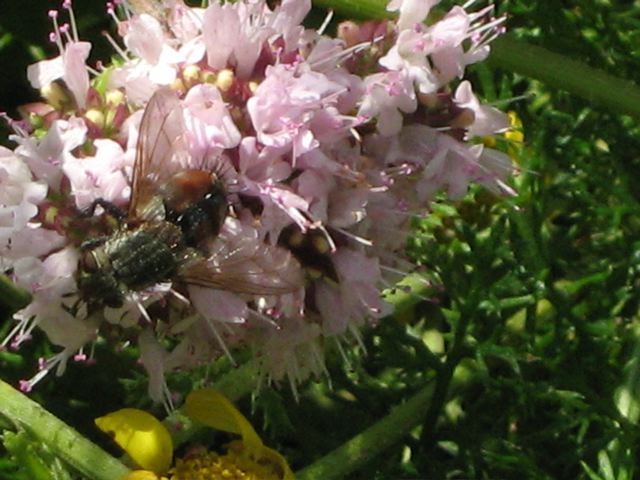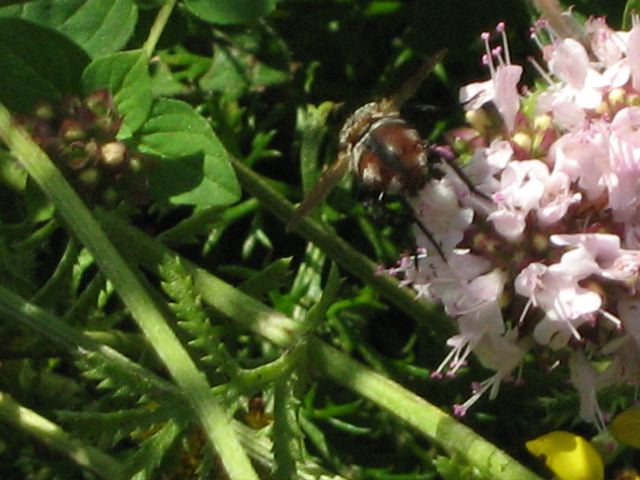Diptera.info :: Identification queries :: Diptera (adults)
|
Nemoraea pellucida, male?
|
|
| yamaneko |
Posted on 29-10-2008 15:03
|
|
Member Location: Posts: 97 Joined: 07.08.08 |
Is it, what I suspect? Regards, Nadine yamaneko attached the following image:  [63.71Kb] |
|
|
|
| yamaneko |
Posted on 29-10-2008 15:04
|
|
Member Location: Posts: 97 Joined: 07.08.08 |
Second Foto
yamaneko attached the following image:  [60.44Kb] |
|
|
|
| Zeegers |
Posted on 29-10-2008 22:04
|
|
Member Location: Soest, NL Posts: 19218 Joined: 21.07.04 |
No, it is a Peleteria (difficult to see). Impossble (for me) to give a species name. Theo |
|
|
|
| ChrisR |
Posted on 29-10-2008 22:04
|
|
Super Administrator Location: Reading, England Posts: 7706 Joined: 12.07.04 |
My guess is Peleteria or Tachina sp. but I can't really see enough to be sure ... the head/body ratio doesn't look right for Nemoraea  |
| yamaneko |
Posted on 30-10-2008 13:45
|
|
Member Location: Posts: 97 Joined: 07.08.08 |
Thanks for the answers. Peleteria or Tachina? So I was completely wrong. The fly caught my eye because it was really redish and had those white spots. And the Nemoraea pellucida in the gallery looked very similar. So what is it what distinguish Peleteria or Tachina from Nemoraea? Bye, Nadine |
|
|
|
| ChrisR |
Posted on 30-10-2008 16:26
|
|
Super Administrator Location: Reading, England Posts: 7706 Joined: 12.07.04 |
They look quite different  If you look at Nemoraea you should see that the head is a lot smaller in relation to the body and the abdomen is quite wide, when compared with Tachina or Peleteria. My guess was Peleteria because the abdomen colour is quite red, not like the pale orange in Tachina. But to be sure you have to see the head clearly and look for a few stiff bristles between the lower eye edge and the mouth. They only exist in Peleteria and in Tachina the most you will see is soft hair. |
| Zeegers |
Posted on 30-10-2008 20:48
|
|
Member Location: Soest, NL Posts: 19218 Joined: 21.07.04 |
The vertex is too broad even for a female Tachina. SO it really is Peleteria. MInd you, this is true for only some Peleteria, included the most common: rubescens. Theo |
|
|
|
| Jump to Forum: |













